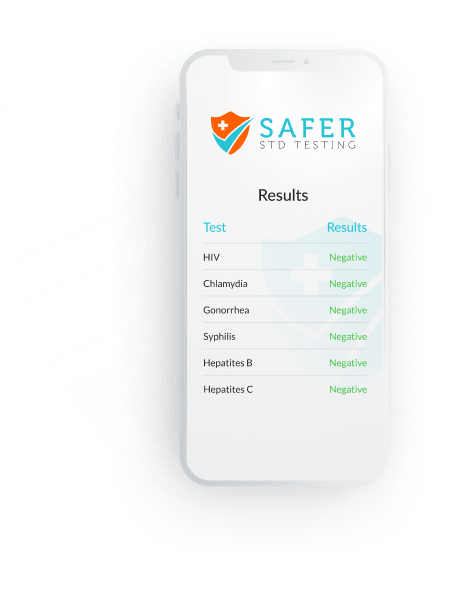


Activities that spread hepatitis C include the following (1):
Screening means getting tested for a disease before it starts to cause symptoms or serious health problems. The following groups are at risk for hepatitis C and should get screened, according to the Centers for Disease Control and Prevention (1)(4):
The US Preventive Services Task Force recommends hepatitis C screening for all adults aged 18 to 79.(5)
It takes 2 to 12 weeks for acute hepatitis C infection to cause symptoms, but only 20 to 30% with acute hepatitis C go on to develop symptoms (1). Possible symptoms include:
Most people with chronic hepatitis B don’t have symptoms but they may suffer from fatigue and depression. If the patient develops cirrhosis or liver cancer, potential symptoms include (6)(7):
It is recommended to go to the emergency room or see a physician as soon as possible if you have these symptoms:
The hepatitis C virus can damage the liver cells, which causes certain liver enzymes to leak out of the cells and into the bloodstream. The concentration of the liver enzymes is easily measured in a blood test.
Approximately 75-85% of people with acute hepatitis C go on to develop the chronic form of the infection (1).
Complications of untreated chronic hepatitis C include:
Pregnant women can pass hepatitis C to their infant with a 4 to 7% risk of transmission (1). The risk is higher if the mother has a high concentration of the hepatitis C virus in her bloodstream or if the mother has HIV.
The blood tests for hepatitis C infection (8) are designed to detect:
Screening for hepatitis C is done with the antibody test. If the hepatitis C antibody is negative, then generally no further testing is needed. However, this test might not detect the virus if you have a weakened immune system or if you have been exposed to hepatitis C in the past 6 months. If those circumstances, you may need a repeated antibody test or an RNA test to make sure you don’t have hepatitis C.
A positive result on the hepatitis C antibody test means you have had hepatitis C infection at some point, but it doesn’t tell if the infection is active. The next step is the RNA test.
If the RNA test is negative, that typically means that there is no active infection with hepatitis C. However, a repeated antibody or RNA test may be appropriate if the concern for active infection is high.
A positive result on the RNA test means that the hepatitis C infection is currently active. Treatment is available.
Before starting treatment for hepatitis C, your health care provider may ask about the following:
The health care provider may also perform these tests:
The viral load (amount of RNA) will be measured to guide and monitor treatment for hepatitis C. Additionally, the exact variant of hepatitis C virus (genotype) will be determined through a blood test. The main hepatitis C genotypes are called 1a, 1b, 2, 3, 4, 5, and 6 (3).
The goal of treating hepatitis C is to cure the infection and lower the risk of developing complications.
There are several medication regimens for treating hepatitis C (3). The choice of medication depends on factors such as:
Simplified treatment is recommended for adults with chronic hepatitis C who don’t have cirrhosis and have not yet been treated for hepatitis C (3). Options for simplified treatment are oral tablets that combine two medications, such as:
There are several treatment options for people who don’t qualify for simplified treatment (3). Duration of treatment is 8 or 12 weeks. Depending on the genotype and other clinical variables, options include:
Someone is considered cured of hepatitis C if they have zero virus in the blood 12 weeks after finishing treatment (3).
Treatment of hepatitis C can trigger reactivation of hepatitis B virus infection. Reactivation means an inactive infection becomes active in the body. Patients undergoing hepatitis C treatment should be monitored closely for hepatitis B.
Other important aspects of care for patients with hepatitis C include:
While vaccines are available for other viral liver infections (hepatitis A and hepatitis B), currently there is no vaccine for hepatitis C.
Injecting drugs is the most common way hepatitis C is spread today. The best way to avoid getting hepatitis C from injecting drugs is to completely avoid using and injecting recreational drugs.
If continuing to inject drugs, use the following procedures to lower your risk of getting hepatitis C (9):
If you are sexually active, practice safe sex. Use a latex condom at all times and stay in a mutually monogamous relationship with a partner who does not have hepatitis C or other sexually transmitted infection. Mutually monogamous means that you and your partner have sex only with each other and not with other people.
Health care workers should use standard infection control procedures and precautions to lower the risk of becoming infected with hepatitis C as a result of occupational exposure
Scientists are working on developing a hepatitis C vaccine.
Question 1: Can hepatitis C be spread during medical or dental procedures?
Answer 1: If standard infection control procedures and precautions are followed, hepatitis C will not be spread during medical or dental procedures (1).
Question 2: Can hepatitis C be spread within a household?
Answer 2: Yes, but the risk is low (1).




